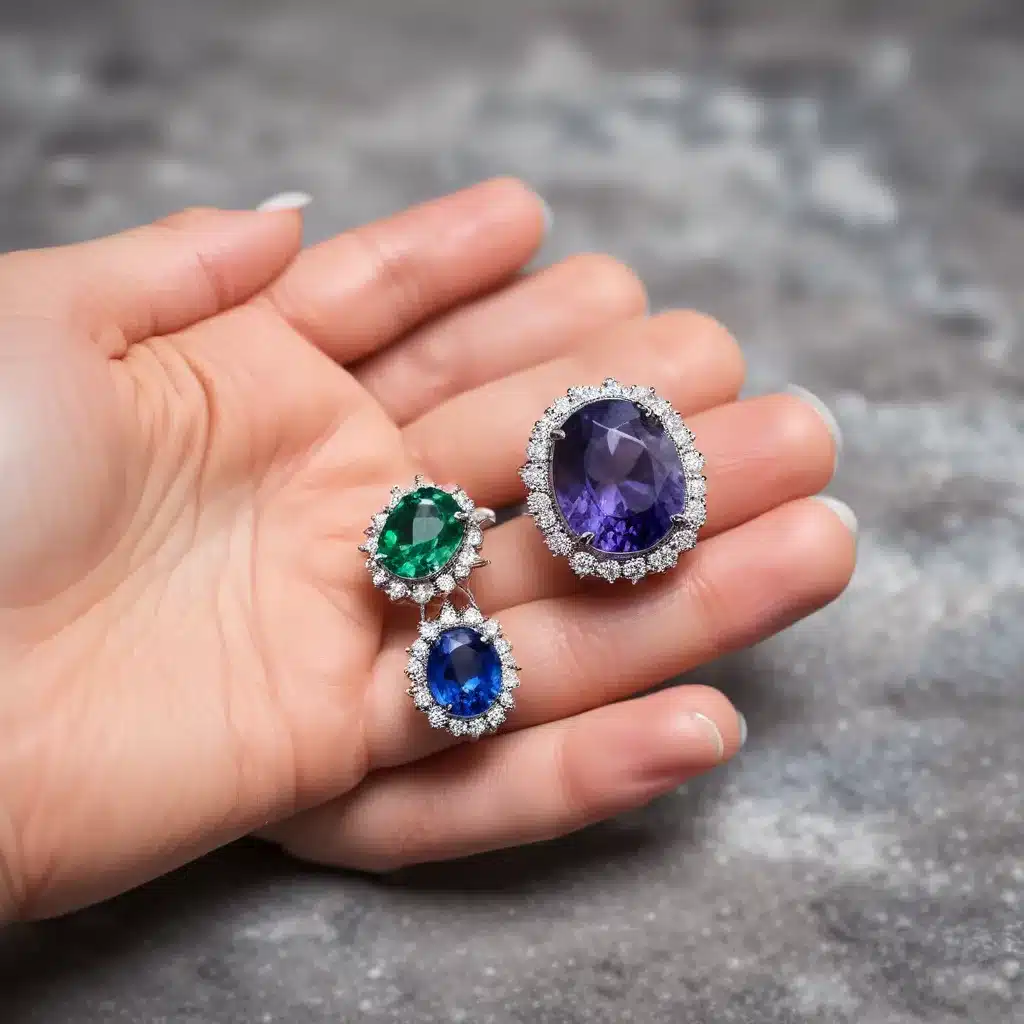
Precious gemstones are more than just beautiful adornments – they represent artistry, craftsmanship, and history. To ensure your cherished gems retain their luster and value for years to come, it is crucial to provide them with proper care and maintenance. This comprehensive guide will offer valuable insights and expert tips on handling, cleaning, storing, and protecting your gemstone jewelry.
Cleaning and Maintenance Techniques
Gentle handling is the cornerstone of gemstone jewelry care. Even the slightest mishap can tarnish the beauty of your precious stones. Be mindful of activities like washing, gardening, or exercising while wearing your jewelry, as these can all cause damage. To preserve the sparkle and shine of your collection, familiarize yourself with the unique properties of each gemstone.
Some gems, like rubies, sapphires, and diamonds, can be cleaned with a combination of warm water and mild detergent or non-abrasive jewelry cleaner. On the other hand, soft and porous gems like pearls, turquoise, and opals require more delicate care, such as gently wiping with a soft cloth after each wearing. Understanding the specific needs of your gemstones is the key to ensuring their longevity and maintaining their natural brilliance.
Professional cleaning methods, such as ultrasonic and steam cleaning, can be effective for some gemstones. However, these advanced techniques may not be suitable for all types of gems. Porous and fragile stones like pearls should be kept away from ultrasonic cleaning to prevent damage. Cautious utilization of these cleaning methods and consultation with a professional jeweler or gemstone expert is vital to ensure the best care for your precious stones.
Proper Storage and Handling
Proper storage is just as important as handling when it comes to caring for your gemstone jewelry. To prevent scratches and other damage, store your jewelry in a jewelry box or soft cloth bag, with pieces stored separately. Silver and sterling silver jewelry settings, in particular, should be kept in tarnish-preventive bags and away from direct sunlight.
Handling your gemstone jewelry responsibly also involves removing it during activities that may cause damage, such as swimming or working with chemicals. Regular inspections and checkups with a professional jeweler can help identify any loose settings, damaged prongs, or other potential issues that may require attention, ensuring the longevity of your precious gems.
Identifying Potential Damage
Organic and porous stones, such as opals, zircon, apatite, and kunzite, require special care regimens to maintain their natural beauty and brilliance. Avoid exposing these gems to extreme temperatures and harsh chemicals, as they can be damaged or lose their luster. Following the proper care instructions for each organic gemstone and adhering to specialized care regimens ensures the longevity and brilliance of these exceptional treasures.
Porous gemstones, in particular, can quickly absorb liquids, making them vulnerable to damage. When cleaning porous stones, it is best to use a clean, lint-free microfiber cloth or a soft linen cloth, avoiding soap, detergents, and cleaning solutions that can cause further harm.
Gemstone Types and Characteristics
Understanding the unique properties of your gemstones is crucial for providing the appropriate care. Factors like hardness, toughness, and stability all contribute to a gemstone’s durability and determine the best methods for handling, cleaning, and storing your jewelry.
Hardness, as measured on the Mohs Hardness Scale, refers to a gem’s ability to resist scratches and abrasions. Diamonds, sitting at the top of the scale at 10, are nearly four times harder than the next closest natural gemstone, corundum (sapphire and ruby). This durability makes diamonds an excellent choice for everyday jewelry, while softer gems may be better suited for necklaces or earrings.
Toughness, on the other hand, is the gemstone’s ability to resist breaking and chipping. Although diamonds are incredibly hard, they are not particularly tough, and can cleave if struck at the right angle. In contrast, the much softer jade is exceptionally tough, making it a popular choice for bangle bracelets.
Stability, the measure of how well a gemstone holds up to heat, chemicals, humidity, and light, is another crucial factor to consider. Emeralds, for example, are typically fracture-filled with an oil or resin to improve their appearance and clarity. Excessive heat can melt that filling and further damage the gemstone, so emeralds and other fracture-filled gems should never be placed in an ultrasonic cleaner or exposed to high temperatures.
Environmental Factors to Consider
Light and heat can have damaging effects on your gemstone jewelry, causing color fading and structural damage in some cases. Shielding your gems from direct sunlight and excessive heat is crucial to prevent these issues. Emeralds, rubies, and sapphires are known to fade in sunlight, so it’s important to store your gemstone jewelry in a cool, dry place away from direct sunlight and temperature fluctuations.
Temperature control is also an essential aspect of gemstone care. Extreme temperatures and sudden fluctuations can lead to damage, particularly for sensitive gemstones like pearls, opals, kunzite, and apatite. Mastering the art of temperature control preserves the integrity of your gemstone collection.
Jewelry Repair and Restoration
Regular inspections and professional checkups are a fundamental aspect of responsible gemstone ownership. These routine examinations allow jewelers to assess the overall condition of your jewelry, identify any loose settings, damaged prongs, or other potential issues that may require attention.
Scheduled checkups with a professional jeweler, combined with periodic self-inspections using tools like loupes and magnifiers, ensure that any problems are detected and addressed before they worsen. By prioritizing these inspections, you can safeguard the longevity and enduring beauty of your valuable gemstone collection.
In conclusion, proper care and maintenance are essential for preserving the beauty and value of your gemstone jewelry. By understanding the unique properties of your precious stones, implementing safe storage practices, wearing your gemstone jewelry responsibly, and employing effective gem cleaning techniques, you can ensure the longevity and brilliance of your gemstone collection. Remember, the key to enjoying your gemstone jewelry responsibly lies in striking a harmonious balance between style, care, and sustainability.

